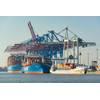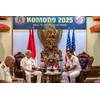Narco-Submarines: The Hidden Depths of Drug Trafficking
Narco-submarines, the clandestine vessels used by drug traffickers, represent one of the most sophisticated and elusive methods of smuggling drugs across international waters. These semi-submersible and fully submersible crafts are a testament to the ingenuity and resourcefulness of criminal organizations in circumventing law enforcement efforts. This article delves into the history, construction, operation, and interdiction of narco-submarines, highlighting their impact on global drug trafficking.
History and Evolution
The concept of using submarines for drug smuggling emerged in the 1990s, with initial sightings reported in Colombia. Early versions were rudimentary, often referred to as "semi-submersibles" because they couldn't fully submerge and were primarily constructed from wood and fiberglass. Over time, the designs have become more advanced, incorporating metal hulls and sophisticated navigation systems.
Construction and Capabilities
Design and Build: Narco-submarines are typically constructed in remote jungle shipyards in South America, particularly in Colombia and Ecuador. These shipyards are often located in dense forests along rivers, making detection by authorities challenging. The vessels are built to be low-profile, with a hull that sits just above the waterline, reducing their radar signature.
Types of Narco-Submarines:
- Low-Profile Vessels (LPVs): These are the most common type, capable of carrying several tons of cocaine. They are designed to travel just below the water's surface, with only the cockpit and exhaust pipe visible above the water.
- Fully Submersible Submarines: These are less common but represent a significant leap in technology. Fully submersible narco-submarines can travel completely underwater, making them virtually undetectable by conventional maritime patrols.
Capabilities: Narco-submarines can travel thousands of miles from South America to the United States or Europe. They are equipped with GPS navigation systems, powerful diesel engines, and large fuel tanks to support long voyages. Some vessels even have air conditioning and oxygen generation systems to support the crew during extended underwater missions.
Operation and Routes
Narco-submarines typically operate with small crews of two to four people. These crews are often well-compensated for the high-risk missions. The routes taken by these vessels are carefully planned to avoid detection, often traveling along the Pacific and Atlantic coasts of Central and North America or crossing the Atlantic to West Africa and Europe.
Law Enforcement Challenges
Detection and Interdiction: Detecting narco-submarines is incredibly challenging due to their low profile and ability to operate underwater. Traditional radar and sonar systems used by naval and coast guard vessels are often ineffective. Advanced technologies such as unmanned aerial vehicles (UAVs), satellite surveillance, and underwater acoustic sensors are being increasingly deployed to combat this threat.
Jurisdictional Issues: The international nature of maritime drug trafficking presents significant jurisdictional challenges. Coordinating efforts between multiple countries' law enforcement and naval agencies is essential but often complicated by differing legal frameworks and priorities.
Notable Interdictions
Several high-profile interdictions of narco-submarines have made headlines in recent years:
- 2019 Interception: The U.S. Coast Guard intercepted a fully submersible vessel off the coast of the Pacific, seizing over 12,000 pounds of cocaine. This marked one of the largest drug busts involving a narco-submarine.
- 2020 Seizure: Colombian authorities seized a 65-foot long semi-submersible in the jungles of Nariño, capable of carrying up to six tons of cocaine. The vessel was equipped with advanced navigation and communication systems.
Narco-submarines represent a significant challenge in the fight against global drug trafficking. Their sophisticated design and operation highlight the lengths to which criminal organizations will go to evade law enforcement. Combating this threat requires continuous innovation in detection technologies and enhanced international cooperation. As law enforcement agencies adapt, so too will the traffickers, ensuring that the battle against narco-submarines remains a dynamic and ongoing struggle.



